Printing a Mat Board Collagraph in the Intaglio Style
Collagraph printmaking can arise from something as simple as finding a small, recyclable scrap of mat board. On the way to the trash bin, I pivoted left to my work table, and made a quick sketch of my studio assistant, Scout. He was, as usual, napping in his favorite donut bed. (Get your kitty a donut bed here.)
If you’re unfamiliar with collagraph printmaking from sheets of mat board, visit this post for details and and here is a list of supplies. (P.S. You don’t need a press.)
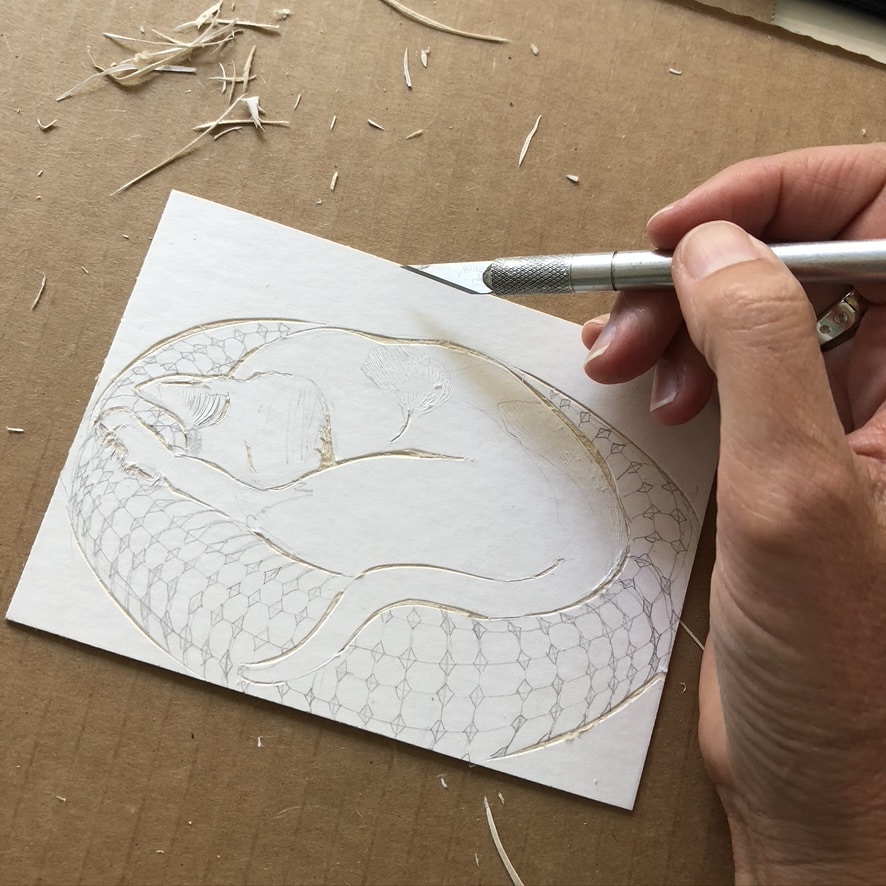
With an exacto knife. I cut shallow linework from the drawing, and then sealed the plate with liquitex gloss medium. Even with two coats to the front, back and edges, the plate was dry in an hour.
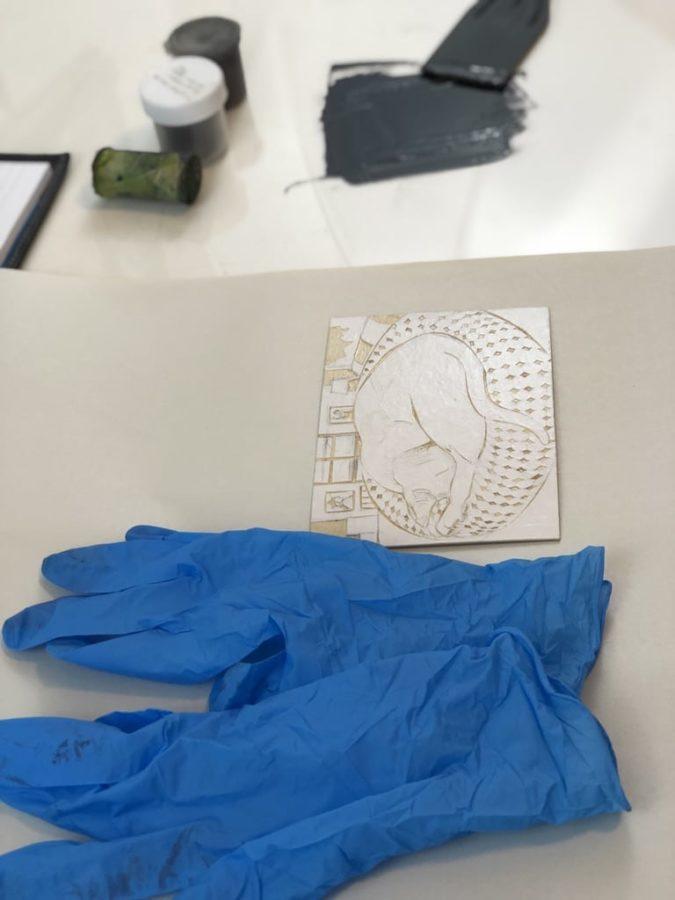
While Scout was dreaming of chasing birds, I inked the plate with some leftover Akua Intaglio, mixed 50-50 with Akua Mag Mix. (That thickens the ink, so it’ll stay in broader areas of the line work even while wiping the plate.)
I pressed a sheet of soaked and blotted BFK Rives printmaking paper against the inked and wiped mat board plate, and pulled a little collagraph on my Takach table top etching press.
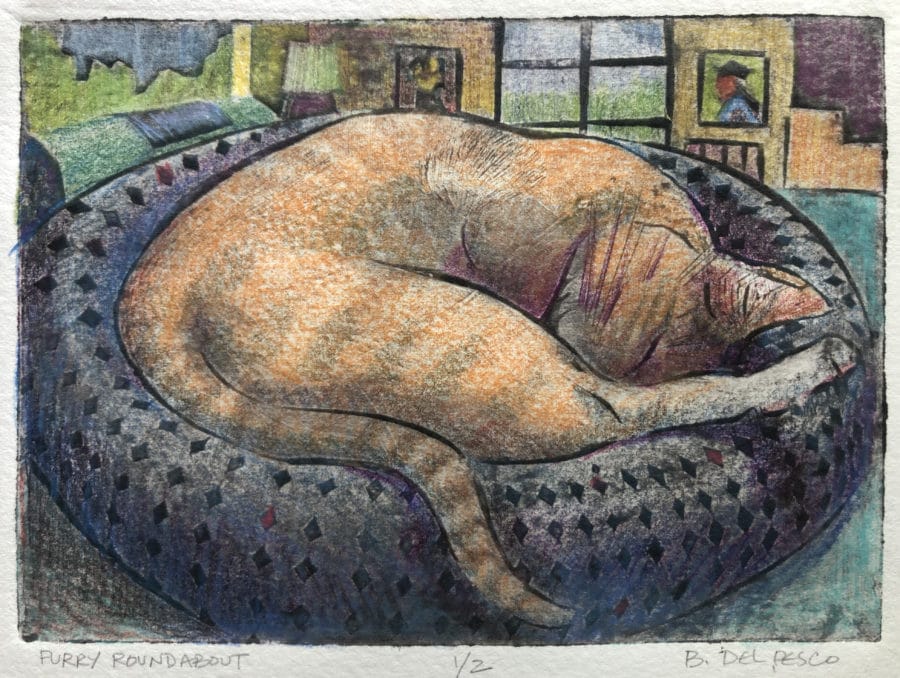
The ink was dry the next morning, so I added colored pencil. Since Scout was sleeping again, I turned him into a ginger tabby cat. (Shhh, don’t tell him.) There’s a quick little video of this speedy cat collagraph below.
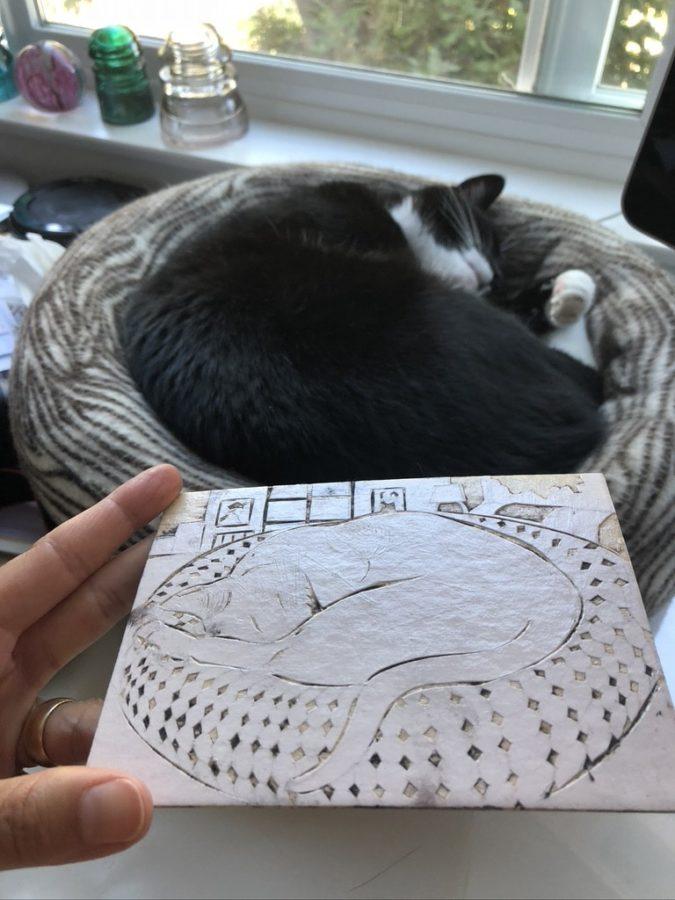

Akua Ink Resource
- When I post printmaking made with Akua inks, I almost always get questions about choosing colors, types of ink, or modifiers, etc. If you’ve ever wondered which inks or modifiers would suit your printmaking style, download the Akua user guide (<–right here) and have a look at the descriptions of ink applications, accessories and modifiers.
Wetland Inspired Printmaking Video
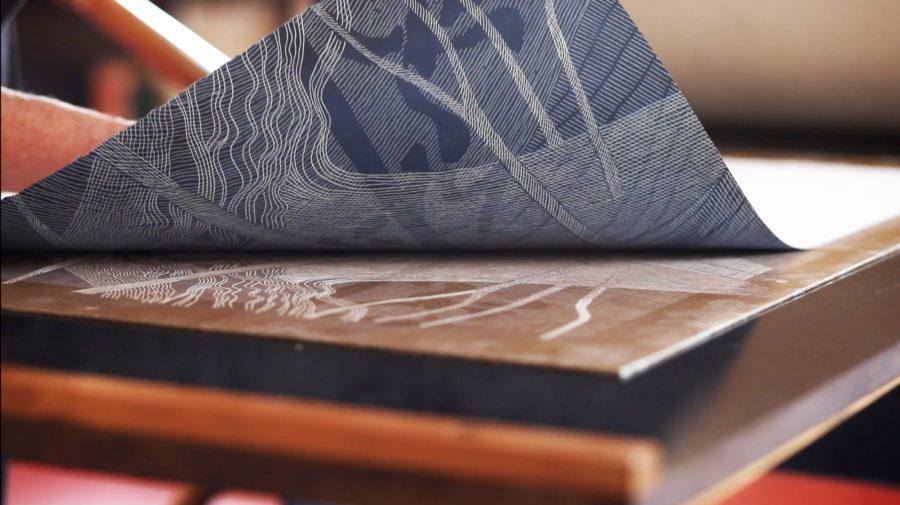
Introduction to Print Registration
- Anyone who’s tried to make a multi-block print, or a reduction linocut, or a multi-color monotype has invested in pre-planning plate registration. Applying parts of a design in stages that require alignment between the block or plate – and the paper you’re printing on – can make all the difference in a successful edition. If you’ve struggled to arrive at a registration solution, this post about the basics of print registration by Michael Merry is something worth bookmarking.
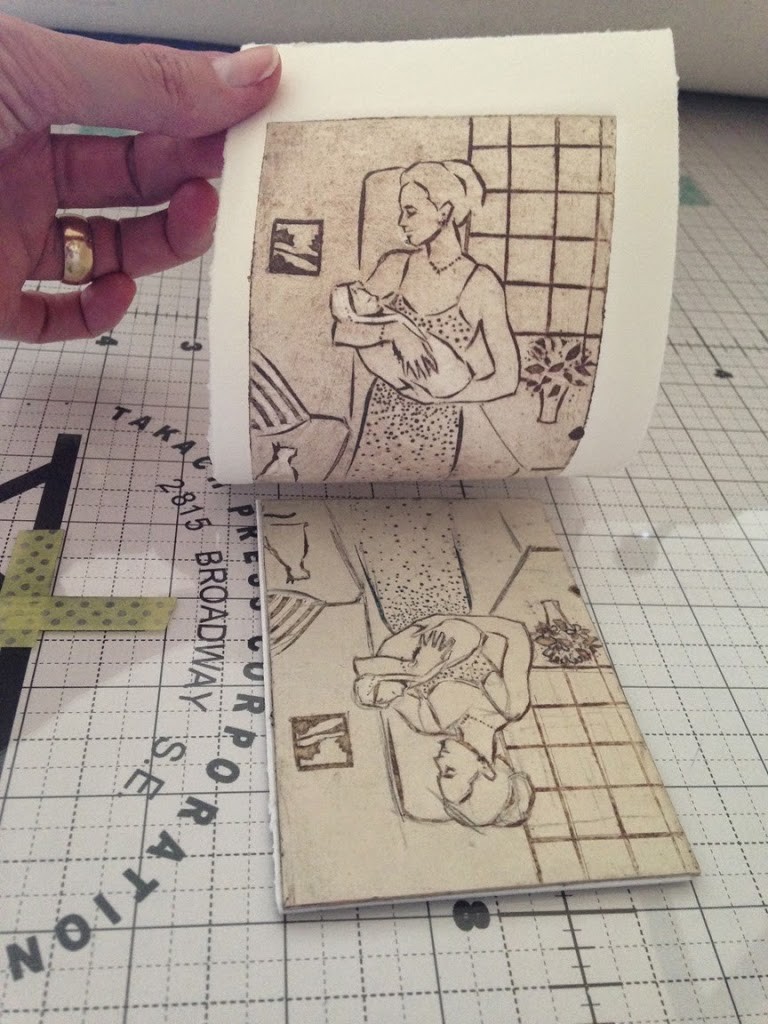
Weaving Apollo’s Guidance Computer
And so, like the lunar rover wheels and the parachutes, the circuits and programs of the Apollo flight computers were also woven by hand, by women at a Raytheon factory in Waltham, Massachusetts. They sat at sophisticated looms, using long needles with wire attached to them instead of thread, carefully weaving the wiring that was the programming of the computers.
Charles Fishman
- This one isn’t about art – directly. I am a space nerd. My father and his father were mechanical engineers, and we grew up watching Star Trek. I follow SpaceX, and get notified each time the International Space Station flies over my house so I can step outside, and soak in wonder while watching it overhead. This short, wonderful article tells a story about the Rope Core Memory used in the Apollo Guidance computer, and how it had to be woven together precisely – like a bolt of cloth – in order to work. It’s about creative problem solving. And that’s the same grit we use to make art.
Thanks for stopping by today, and I’ll see you in the next post –
Belinda
P.S. Here is the Metropolitan Museums’s take on Printmaking.
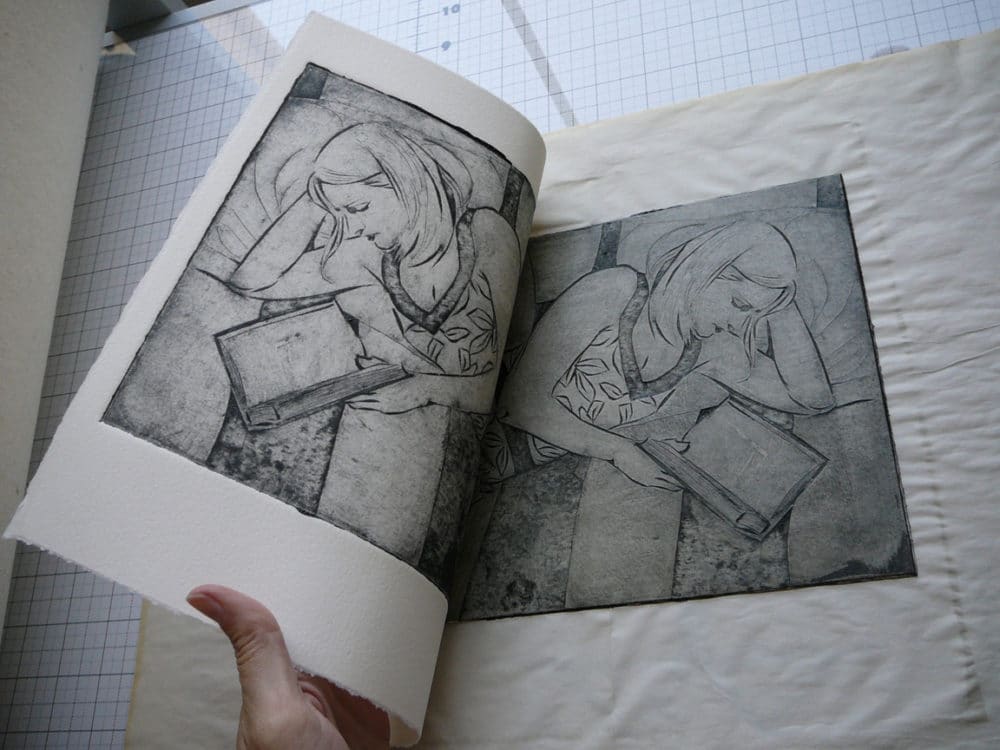
Art Quote
When I was 15, I spent a month working on an archeological dig. I was talking to one of the archeologists one day during our lunch break and he asked those kinds of “getting to know you” questions you ask young people: Do you play sports? What’s your favorite subject? And I told him, no I don’t play any sports. I do theater, I’m in choir, I play the violin and piano, I used to take art classes.
And he went WOW. That’s amazing! And I said, “Oh no, but I’m not any good at ANY of them.”
And he said something then that I will never forget and which absolutely blew my mind because no one had ever said anything like it to me before: “I don’t think being good at things is the point of doing them. I think you’ve got all these wonderful experiences with different skills, and that all teaches you things and makes you an interesting person, no matter how well you do them.”
And that honestly changed my life. Because I went from a failure, someone who hadn’t been talented enough at anything to excel, to someone who did things because I enjoyed them. I had been raised in such an achievement-oriented environment, so inundated with the myth of Talent, that I thought it was only worth doing things if you could “Win” at them.
Kurt Vonnegut
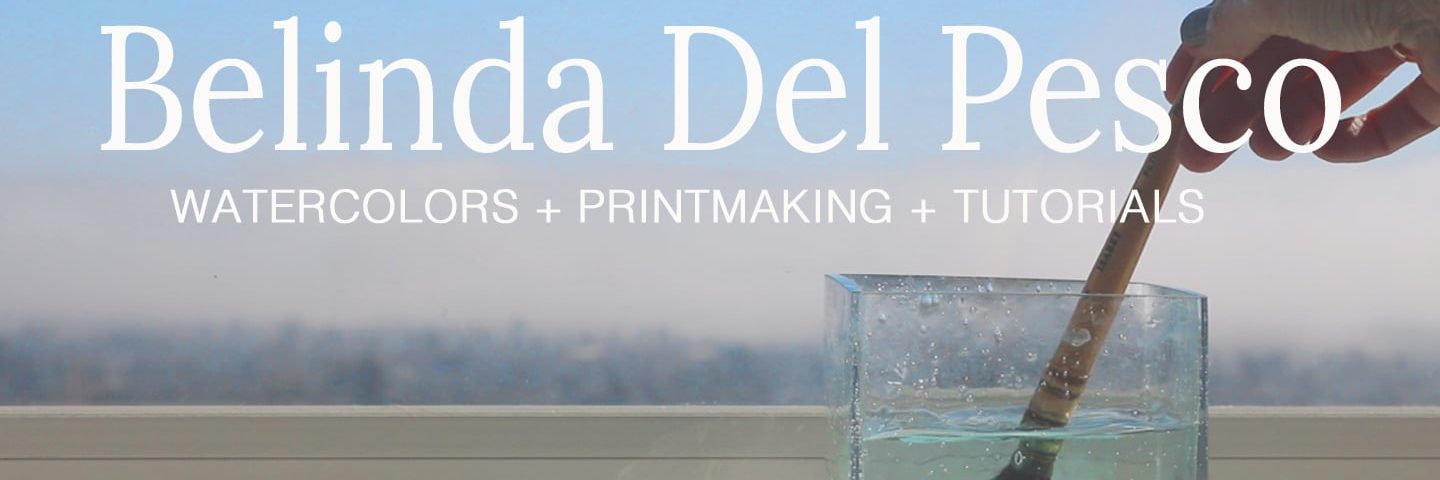
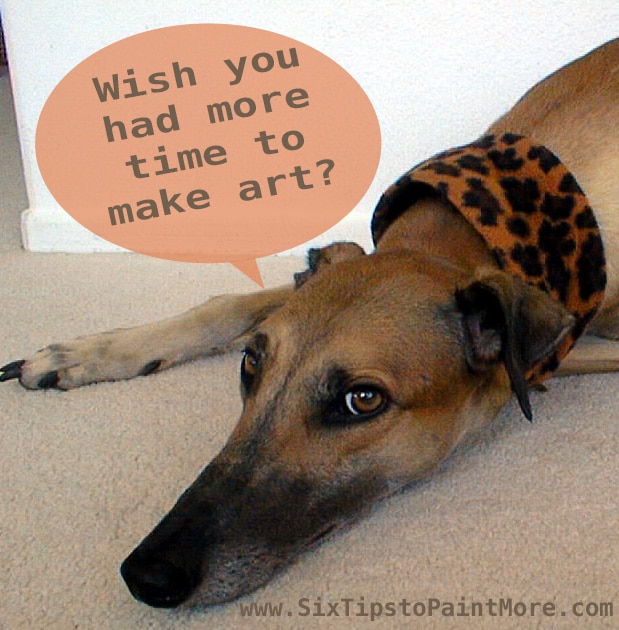
I love that idea. I think I just told a friend that. I just want to enjoy myself. Of course I don’t mean all of the
time — but it’s my motivation for making art, and if I can’t find any enjoyment in a work, it probably won’t
get finished. Love your blog, your art, and your cat. Happy New Year!
XOXOXOXOXOXOXO Barbara
Well, hello there and Happy New Year, my artist friend! Im with you on the no-fun=unfinished trend. My word of the year in 2021 is Finish. Sending you good art vibes from the coast for a ton oif art his year! XOXO, B.